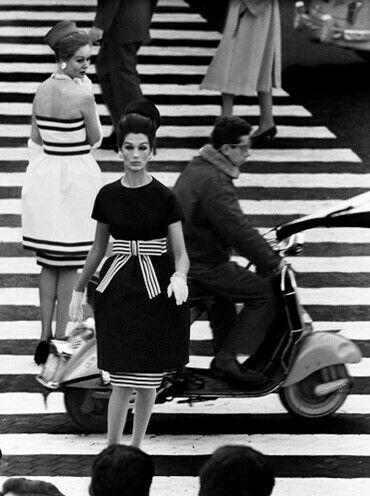
Nina + Simone, Piazza di Spagna, Rome (Vouge), 1960
William Klein
1928 - 2022
50 x 40 cm.
William Klein
Om fotografen
William Klein was born in New York City. After graduating early from high school, he began studying sociology at the City College of New York. In 1946 he joined the U.S. Army and was stationed in Germany, where he won his first camera in a poker game. After relocating to Paris in 1948, he continued his studies at the Sorbonne with the assistance of the G.I. Bill. At the time, his focus was abstract painting and sculpture.
After studying with the French artist Fernand Léger, Klein’s early career breaks came from two exhibitions in Milan, where he was discovered by the architect Angelo Mangiarotti. They began to collaborate when Mangiarotti asked Klein to recreate once of his abstract paintings on the rotating room dividers of a Milanese apartment—his first commissioned work. It was the experience of documenting these panels in motion that lead him to reconsider photography.
In 1954, Alexander Liberman—then the art director of American Vogue—asked to meet with Klein after seeing his kinetic sculptures in the Paris group show, Le Salon des Réalitiés Nouvelles. Subsequently, Vogue published his photographs of Dutch barns, reminiscent of Mondrian, soon after their meeting. Thus began his foray into fashion photography, as well as his well-known photographic essays on various cities. Shooting for Vogue during a brief return to New York, Klein let loose on the city, taking fashion photography in a whole new direction. He captured the beautiful and the grotesque all within wide-angle and telephoto shots. Taking models out of the studio and onto the streets, his revolutionary techniques pioneered a new vision.
He was widely acknowledged as a significant innovator in the history and design of the photo book, and in 1958, Klein began to explore the moving image,